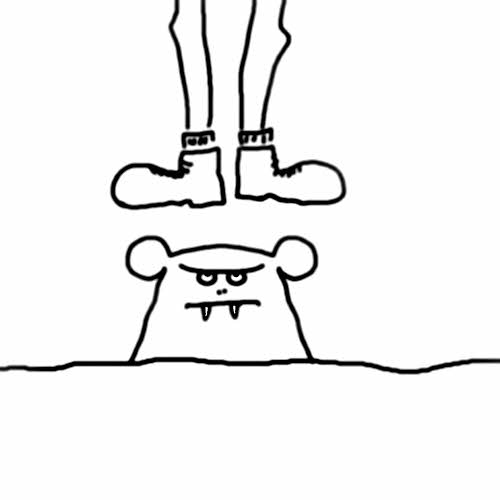What do you do about legs?

Legs are often used in backpacking. True! Just go watch sometime.
What you see on almost any trail where there are people is that they are walking (the people, not the trail, though sometimes you see animals such as dogs, hermit crabs, migrating beasts, ducks, and, if you are in Australia, wombats at times).
You might ask then – hey, what's the thing that is common here?
Legs, my friend – they all have some legs.
First, when you have legs, your clothes stay clean because you are not always on your belly wiggling around. Snakes do this but nakedness is not an option since no one makes decent clothes for snakes any more, so they are off the table.
That leaves the rest of us, and we rely on our legs to keep our clothes clean, which is very important when we want to be served at such fine dining establishments as Taco Gong and Burger Doodle.
Snakes can't eat there because of the no-shirt/no-shoes rule, but dirty people are refused as well. Keep this in mind when deciding whether to walk or slither – you may regret a wrong choice.
Legs provide needed proportion to the rest of your body.
Remember the height-weight proportional rule? It is connected to your legs, usually as a small tag hanging from your butt crack area.
You have seen this tag on others when it peeked over their pants, but you probably haven't seen your own because your eyes are on the opposite side, and you are on the lookout for cougars and free-range wombats (if you are in Australia). Or maybe your tag fell off.
If it did, you lack the proof required to date legally, but on the other hand you have another reason to stay alone in the woods, so there is an up-side.
Legs also help you maintain a proper height.
Without legs you would be much shorter. Much, much shorter. Think about how hard it is now to get your food up in a tree for safety overnight. Now imagine getting it down again, and you can't reach the string at all because of no legs.
Bummer? You bet, so keep your legs stretched. Include regular exercises so your legs continue to reach the ground whenever you stand up.
Here is a telltale sign that something is wrong – whenever you stand up you fall down again. Sure, some people do this naturally. It runs in families, but they are not backpackers, so what do you care? That is no excuse.
You may be naturally klutzy, or your legs may be shrinking because you don't stretch them enough. Then they don't reach the ground any more. Find a mirror. Look. You may be surprised.
Stick with a good exercise plan.
Beyond stretching, here are other good ideas to keep your legs fit.
- Jumping: Use a shorter and shorter string to hang your food, so you have to jump to pull it down. You will find yourself able to jump ever higher as you lose weight from lack of calories, so don't worry if you cut too much off, if you are current on that stretching.
- Running: There is nothing better for legs than running. If you are not a self-starter then try throwing a few stones at the nearest large animal, or at fellow backpackers if no other animals are around that day. When charged, just run like crazy. Works every time.
- Riding a bike: This is cheating. Much better to steal a bike so someone chases you. Then you can practice more running.
- Swimming: OK for some, but generally it is better for the legs to ford deep rivers while wearing a full pack. Look for foamy water. Sometimes you can hear it calling your name from afar.
- Aerobics: This is from the 1980s and no one remembers what it was about, but the result was buns of steel – useless. If anything, you want cinnamon buns, or a few nice caramel rolls, none of which require heavy breathing or wiggling your behind while wearing funny tights.
- Squats: You should be doing this every morning anyway. Don't forget the toilet paper. After a while it will come naturally.
- Wait training: This is what most people do, figuring they'll catch up later. These are the ones that get eaten first.

